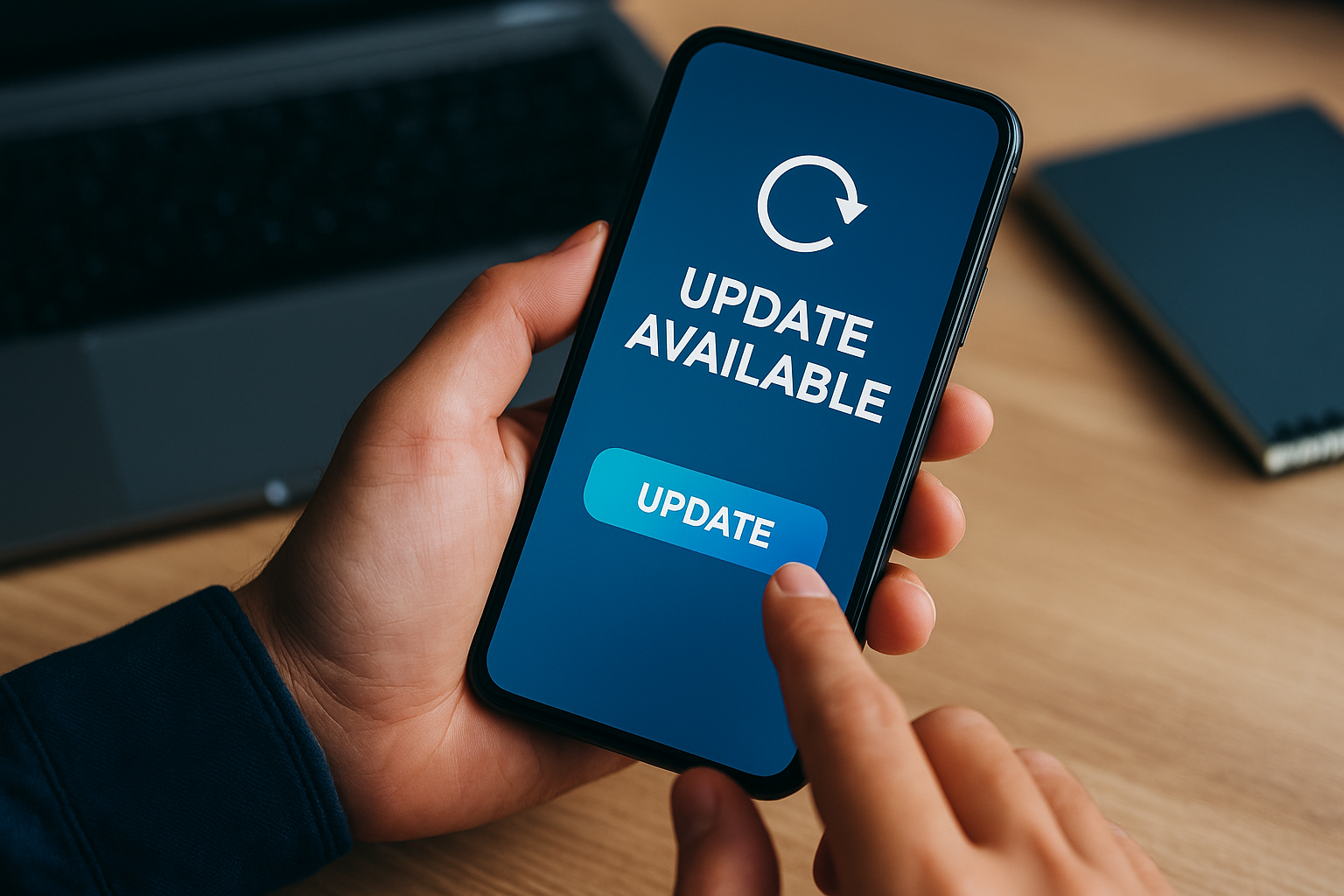Keeping your phone, computer, and apps updated might seem like a hassle—but those updates are far more important than most people realize. They’re not just about adding new features—they’re critical for your security and privacy.
Every day, new bugs and vulnerabilities are discovered. If your system isn’t patched, you’re a target waiting to be exploited.
Let’s explore why regular updates matter and how they help protect you from threats online.
Updates Fix Security Vulnerabilities
Hackers constantly search for flaws in software—known as vulnerabilities. These weaknesses can allow them to:
- Access your personal data
- Install malware
- Take control of your device
- Spy on your activity
When developers learn about these flaws, they release updates to fix them.
If you don’t install updates promptly, your device remains open to known attacks.
Outdated Devices Are Easy Targets
Cybercriminals often rely on users being slow to update. Once a vulnerability becomes public, attackers race to exploit it before most people update.
That’s why updates should be installed as soon as they’re available. Delaying even a week can leave you exposed.
Some attacks, like ransomware or spyware, spread rapidly by targeting older systems.
Keeping your software current is one of the easiest ways to avoid becoming a victim.
Updates Improve Privacy Protection
Many updates also include improvements to privacy settings, permissions, and how your data is handled.
For example, a new version of your phone’s operating system may offer better control over location access or app tracking.
Staying updated means staying in control of your digital footprint.
Outdated apps might continue sharing more data than necessary without you realizing it.
Features and Functionality Get Better
While security is the main reason to update, many updates also improve how your device works.
You may get:
- Better performance and speed
- New tools or customization options
- Fewer crashes or freezes
- Enhanced compatibility with other apps and services
By skipping updates, you miss out on these improvements and risk using buggy software.
App Developers Drop Support for Old Versions
Apps are built for specific operating system versions. As systems evolve, old versions of apps often stop working—or become unstable.
Eventually, developers stop providing updates for older OS versions.
This leaves you stuck with outdated, insecure apps that may no longer function properly.
Updating ensures that all your apps can stay current and compatible.
Updates Can Fix Performance Bugs
Some bugs aren’t just annoying—they can impact security.
A freezing app or slow system might not just be inconvenient. It could be crashing due to background processes being exploited.
Security bugs and performance issues often go hand-in-hand. Updating fixes both in one step.
Don’t ignore bugs and glitches. Update to resolve them and restore smooth performance.
Automatic Updates: Use Them Wisely
Most systems now offer automatic updates—turning this feature on is a smart move for security.
On mobile phones and laptops, you can enable automatic OS and app updates in the settings menu.
Set your system to check for updates at night or during off-hours, so they don’t disrupt your routine.
Still, check periodically to ensure updates aren’t stuck or waiting for permission.
Restarting Matters Too
Some updates require a reboot to take effect. If you never restart your device, those updates may sit idle.
Restarting also clears temporary data, resets stuck processes, and refreshes your system.
Schedule regular restarts at least once a week to ensure all updates are fully installed.
It’s a simple habit that helps keep your system secure and healthy.
Update Your Router and Smart Devices
It’s not just phones and computers—your Wi-Fi router, smart TV, and even smart lightbulbs can be vulnerable if not updated.
These devices often have web-based dashboards where you can check for firmware updates.
Manufacturers release patches to fix bugs and close security gaps in connected devices too.
If your router hasn’t been updated in years, it may be wide open to hackers on your network.
Don’t Ignore Update Warnings
Those “Update Available” notifications are easy to dismiss—but doing so repeatedly is risky.
If an update is marked as “critical,” it means it fixes a major vulnerability already being used in real-world attacks.
Always prioritize these updates. Set aside 15–30 minutes to install them fully.
Consider it a digital safety check, like changing the oil in your car.
Verify Source of Updates
Only download updates from official sources—your device’s app store or system settings.
Scammers may send fake update alerts that install malware instead.
Never click links in emails or pop-ups that claim your system is out of date. Go directly to your device’s update menu instead.
Trust only verified channels when updating software or drivers.
Schedule Time for Manual Updates
While many updates are automatic, some require manual review—especially on older systems or specific software tools.
Set a monthly calendar reminder to check for updates on your devices, browsers, extensions, and critical apps.
This habit ensures nothing slips through the cracks and keeps you aware of what’s running on your systems.
Final Thoughts: Stay Updated, Stay Protected
Updates aren’t just an annoying interruption—they’re an essential part of modern digital safety.
By keeping your devices and apps up to date, you:
- Close security holes
- Enhance privacy
- Fix bugs and slowdowns
- Stay compatible with modern apps
Make updates a routine, not a reaction. Your future self—and your data—will thank you.

With over two decades of experience in the tech world, the author of Promoção InternetFibra is passionate about helping people improve their home internet. He specializes in networks, equipment, and performance optimization, turning complex tech topics into simple, practical advice. His mission is to make reliable, high-speed internet accessible for everyone.
